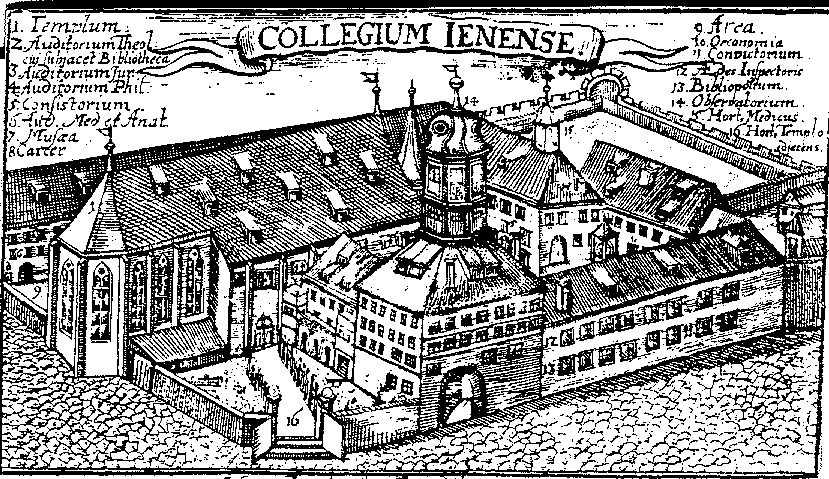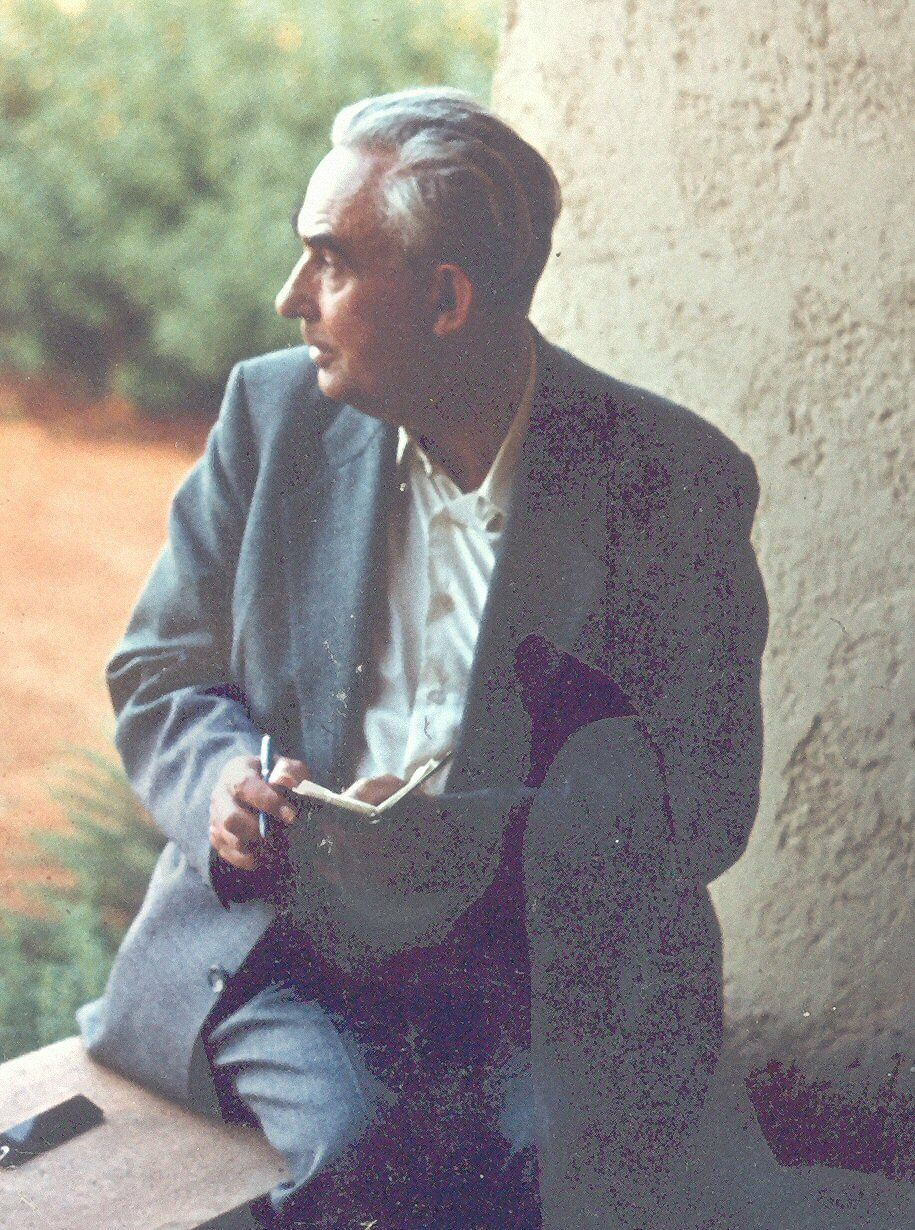|
Adolf Naef
Adolf Naef (1 May 1883 – 11 May 1949) was a Swiss zoologist and palaeontologist who worked on cephalopods and systematics. Although he struggled with academic politics throughout his career and difficult conditions during World War I and II, his work had lasting influences on the fields of phylogenetics, morphology, and embryology. Life Naef was born in Herisau, Switzerland, to parents Martin and Berta. In 1904, he began studying philosophy and literature at the University of Zurich, but soon switched to natural sciences. He graduated in 1908 and went on to pursue a PhD under the guidance of Arnold Lang (1855—1914), a former Professor of Jena University and close friend of Ernst Haeckel as well as a long-time associate of Anton Dohrn.Rieppel, Olivier (2016). ''Phylogenetic Systematics: Haeckel to Hennig.'' CRC Press. Naef visited Dohrn's Zoological Station in Naples, Italy in 1908. Although initially planning to collect eggs from a variety of animals, he ended u ... [...More Info...] [...Related Items...] OR: [Wikipedia] [Google] [Baidu] |
Herisau
Herisau is a municipality and the capital of the canton of Appenzell Ausserrhoden in Switzerland. It is the seat of the canton's government and parliament; the judicial authorities are situated in Trogen. The central hamlet and the houses around the central square, the Protestant church of 1580, the houses ''Wetter'' and ''zur Rose'' (both 1737), the hamlet ''Schwänberg'' and the government building with the state archive are listed as heritage sites of national significance.Swiss inventory of cultural property of national and regional significance (1995), p. 55. Together with other Alpine towns Herisau engages in the Alpine Town of the Year Association for the implementation of the Alpine Convention to achieve sustainable development in the Alpine Arc. Herisau was awarded Alpine Town of the Year 2003. History Herisau was first mentioned in 837 as ''Herinisauva'', and its church is mentioned in 907. In 1084 Herisau was destroyed as part of battles around the monastery in S ... [...More Info...] [...Related Items...] OR: [Wikipedia] [Google] [Baidu] |
Jena University
The University of Jena, officially the Friedrich Schiller University Jena (german: Friedrich-Schiller-Universität Jena, abbreviated FSU, shortened form ''Uni Jena''), is a public research university located in Jena, Thuringia, Germany. The university was established in 1558 and is counted among the ten oldest universities in Germany. It is affiliated with six Nobel Prize winners, most recently in 2000 when Jena graduate Herbert Kroemer won the Nobel Prize for physics. In the 2023 Times Higher Education World University Rankings, the university was awarded 189th place in the world. It was renamed after the poet Friedrich Schiller who was teaching as professor of philosophy when Jena attracted some of the most influential minds at the turn of the 19th century. With Karl Leonhard Reinhold, Johann Gottlieb Fichte, G. W. F. Hegel, F. W. J. Schelling and Friedrich Schlegel on its teaching staff, the university was at the centre of the emergence of German idealism and early Roman ... [...More Info...] [...Related Items...] OR: [Wikipedia] [Google] [Baidu] |
Gastropods
The gastropods (), commonly known as snails and slugs, belong to a large taxonomic class of invertebrates within the phylum Mollusca called Gastropoda (). This class comprises snails and slugs from saltwater, from freshwater, and from land. There are many thousands of species of sea snails and slugs, as well as freshwater snails, freshwater limpets, and land snails and slugs. The class Gastropoda contains a vast total of named species, second only to the insects in overall number. The fossil history of this class goes back to the Late Cambrian. , 721 families of gastropods are known, of which 245 are extinct and appear only in the fossil record, while 476 are currently extant with or without a fossil record. Gastropoda (previously known as univalves and sometimes spelled "Gasteropoda") are a major part of the phylum Mollusca, and are the most highly diversified class in the phylum, with 65,000 to 80,000 living snail and slug species. The anatomy, behavior, feedi ... [...More Info...] [...Related Items...] OR: [Wikipedia] [Google] [Baidu] |
Loligo Squid Embryos
''Loligo'' is a genus of squid and one of the most representative and widely distributed groups of myopsid squid. The genus was first described by Jean Baptiste Lamarck in 1798. However, the name had been used earlier than Lamarck (Schneider, 1784; Linnaeus, 1758) and might even have been used by Pliny. In the early 19th century, this generic name was often used as a grouping for all true squid. All three species of ''Loligo'' are caught by commercial fisheries, most abundantly by traditional trawling methods (mobile gear). In the United States of America, Longfin squid are federally regulated under the Atlantic Mackerel, Squid, and Butterfish Management Plan. ''Loligo vulgaris'' and others are noted for being attracted to lights at night; they can therefore be fished using different light-attraction methods. Commercial fishing is heavily regulated in the United States, and fishing using mobile gear is only permitted during daylight hours. However, the recreational fisherma ... [...More Info...] [...Related Items...] OR: [Wikipedia] [Google] [Baidu] |
Willi Hennig
Emil Hans Willi Hennig (20 April 1913 – 5 November 1976) was a German biologist and zoologist who is considered the founder of phylogenetic systematics, otherwise known as cladistics. In 1945 as a prisoner of war, Hennig began work on his theory of cladistics, which he published in German in 1950, with a substantially revised English translation published in 1966. With his works on evolution and systematics he revolutionised the view of the natural order of beings. As a taxonomist, he specialised in dipterans (true flies). Hennig coined the key terms synapomorphy, symplesiomorphy, and paraphyly. He also asserted, in his "auxiliary principle", that "the presence of apomorphous characters in different species 'is always reason for suspecting kinship .e., that species belong to a monophyletic group and that their origin by convergence should not be presumed a priori' (Hennig, 1953). This was based on the conviction that 'phylogenetic systematics would lose all ground on which it ... [...More Info...] [...Related Items...] OR: [Wikipedia] [Google] [Baidu] |
Cladistics
Cladistics (; ) is an approach to biological classification in which organisms are categorized in groups (" clades") based on hypotheses of most recent common ancestry. The evidence for hypothesized relationships is typically shared derived characteristics ( synapomorphies'')'' that are not present in more distant groups and ancestors. However, from an empirical perspective, common ancestors are inferences based on a cladistic hypothesis of relationships of taxa whose character states can be observed. Theoretically, a last common ancestor and all its descendants constitute a (minimal) clade. Importantly, all descendants stay in their overarching ancestral clade. For example, if the terms ''worms'' or ''fishes'' were used within a ''strict'' cladistic framework, these terms would include humans. Many of these terms are normally used paraphyletically, outside of cladistics, e.g. as a ' grade', which are fruitless to precisely delineate, especially when including extinct species. ... [...More Info...] [...Related Items...] OR: [Wikipedia] [Google] [Baidu] |
Evolution
Evolution is change in the heritable characteristics of biological populations over successive generations. These characteristics are the expressions of genes, which are passed on from parent to offspring during reproduction. Variation tends to exist within any given population as a result of genetic mutation and recombination. Evolution occurs when evolutionary processes such as natural selection (including sexual selection) and genetic drift act on this variation, resulting in certain characteristics becoming more common or more rare within a population. The evolutionary pressures that determine whether a characteristic is common or rare within a population constantly change, resulting in a change in heritable characteristics arising over successive generations. It is this process of evolution that has given rise to biodiversity at every level of biological organisation, including the levels of species, individual organisms, and molecules. The theory of evol ... [...More Info...] [...Related Items...] OR: [Wikipedia] [Google] [Baidu] |
Charles Darwin
Charles Robert Darwin ( ; 12 February 1809 – 19 April 1882) was an English natural history#Before 1900, naturalist, geologist, and biologist, widely known for his contributions to evolutionary biology. His proposition that all species of life have descended from a Common descent, common ancestor is now generally accepted and considered a fundamental concept in science. In a joint publication with Alfred Russel Wallace, he introduced his scientific theory that this Phylogenetics, branching pattern of evolution resulted from a process he called natural selection, in which the struggle for existence has a similar effect to the artificial selection involved in selective breeding. Darwin has been described as one of the most influential figures in human history and was honoured by Burials and memorials in Westminster Abbey, burial in Westminster Abbey. Darwin's early interest in nature led him to neglect his medical education at the University of Edinburgh Medical School, ... [...More Info...] [...Related Items...] OR: [Wikipedia] [Google] [Baidu] |
Adolf Portmann
Adolf Portmann (27 May 1897 – 28 June 1982) was a Swiss zoologist. Born in Basel, Switzerland, he studied zoology at the University of Basel and worked later in Geneva, Munich, Paris and Berlin, but mainly in marine biology laboratories in France (Banyuls-sur-Mer, Roscoff, Villefranche-sur-Mer) and Helgoland. In 1931 he became professor of zoology in Basel. His main research areas covered marine biology and comparative morphology of vertebrates. His work was often interdisciplinary comprising sociological and philosophical aspects of life of animals and humans. Portmann was known for his work in theoretical biology and his comparative studies on morphology and behavior. His research has influenced the field of biosemiotics Biosemiotics (from the Greek βίος ''bios'', "life" and σημειωτικός ''sēmeiōtikos'', "observant of signs") is a field of semiotics and biology that studies the prelinguistic meaning-making, biological interpretation processes, pr ....Ka ... [...More Info...] [...Related Items...] OR: [Wikipedia] [Google] [Baidu] |
University Of Basle
The University of Basel (Latin: ''Universitas Basiliensis'', German: ''Universität Basel'') is a university in Basel, Switzerland. Founded on 4 April 1460, it is Switzerland's oldest university and among the world's oldest surviving universities. The university is traditionally counted among the leading institutions of higher learning in the country. The associated Basel University Library is the largest and among the most important libraries in Switzerland. The university hosts the faculties of theology, law, medicine, humanities and social sciences, science, psychology, and business and economics, as well as numerous cross-disciplinary subjects and institutes, such as the Biozentrum for biomedical research and the Institute for European Global Studies. In 2020, the university had 13,139 students and 378 professors. International students accounted for 27 percent of the student body. In its over 500-year history, the university has been home to Erasmus of Rotterdam, Paracels ... [...More Info...] [...Related Items...] OR: [Wikipedia] [Google] [Baidu] |
University Of Cairo
Cairo University ( ar, جامعة القاهرة, Jāmi‘a al-Qāhira), also known as the Egyptian University from 1908 to 1940, and King Fuad I University and Fu'ād al-Awwal University from 1940 to 1952, is Egypt's premier public university. Its main campus is in Giza, immediately across the Nile from Cairo. It was founded on 21 December 1908;"Brief history and development of Cairo University." Cairo University Faculty of Engineering. http://www.eng.cu.edu.eg/CUFE/History/CairoUniversityShortNote/tabid/81/language/en-US/Default.aspx however, after being housed in various parts of Cairo, its faculties, beginning with the Faculty of Arts, were established on its current main campus in Giza in October 1929. It is the second oldest institution of higher education in Egypt after Al Azhar University, notwithstanding the pre-existing higher professional schools that later became constituent colleges of the university. It was founded and funded as the Egyptian University by a com ... [...More Info...] [...Related Items...] OR: [Wikipedia] [Google] [Baidu] |
University Of Zagreb
The University of Zagreb ( hr, Sveučilište u Zagrebu, ; la, Universitas Studiorum Zagrabiensis) is the largest Croatian university and the oldest continuously operating university in the area covering Central Europe south of Vienna and all of Southeastern Europe. The University of Zagreb and the University North are the only public universities operating in Northern Croatia, Northern and Central Croatia. The history of the University began on September 23, 1669, when the Holy Roman Emperor Leopold I, Holy Roman Emperor, Leopold I issued a decree granting the establishment of the ''Jesuit Academy of the Royal Free City of Zagreb''. The decree was accepted at the Council of the Croatian Kingdom on November 3, 1671. The Academy was run by the Jesuits for more than a century until the order was dissolved by Pope Clement XIV in 1773. In 1776, Empress Maria Theresa issued a decree founding the ''Royal Academy of Science'' which succeeded the previous Jesuit Academy. Bishop Josip Jura ... [...More Info...] [...Related Items...] OR: [Wikipedia] [Google] [Baidu] |










.jpg)